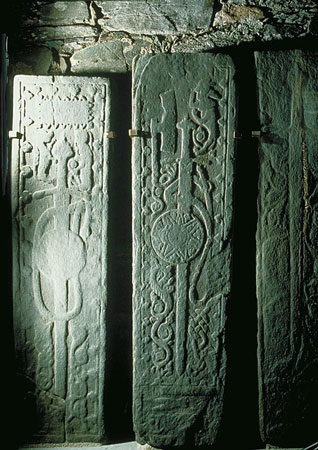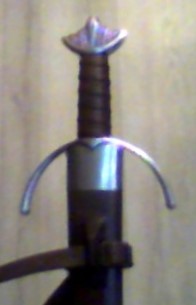I've been wondering a lot about Scottish swords lately, and I just so happened to stumble across a bunch of pictures from Kilmory Knap Chapel and Keills Chapel (western Scotland) with some rather stunning depictions of swords carved in stone. I've read these stones dated variously from the 12th to the 14th century (12th seems awfully early?), leaving me with little certainty about where they actually fall. Of the ones I could get a good look at from pictures, it seems that they had the down-swept quillons (of course that have become stereotypical of Scottish swords) and either wheel pommels with large peen blocks or some evolution of the Viking-age type lobate pommel. The MacMillan Cross, which I understand to be 15th century, also depicts a single-handed sword with a lobate pommel. Essentially, the depictions were in line with Albion's Laird and Caithness swords.
By chance, does anyone happen to have a better approximation for the dates of any of these sword depictions? I'm trying to get an idea of what Scottish swords of the high (or early-late?) middle ages would have looked like (if and where they are unique, of course) and I don't seem to be having a great amount of luck. I've attached a couple of the better pictures I found - there are better pictures on google but I was trying to avoid copyrighted stuff.
Thanks in advance for any help!
Peter

[ Download ]
[ Download ]
